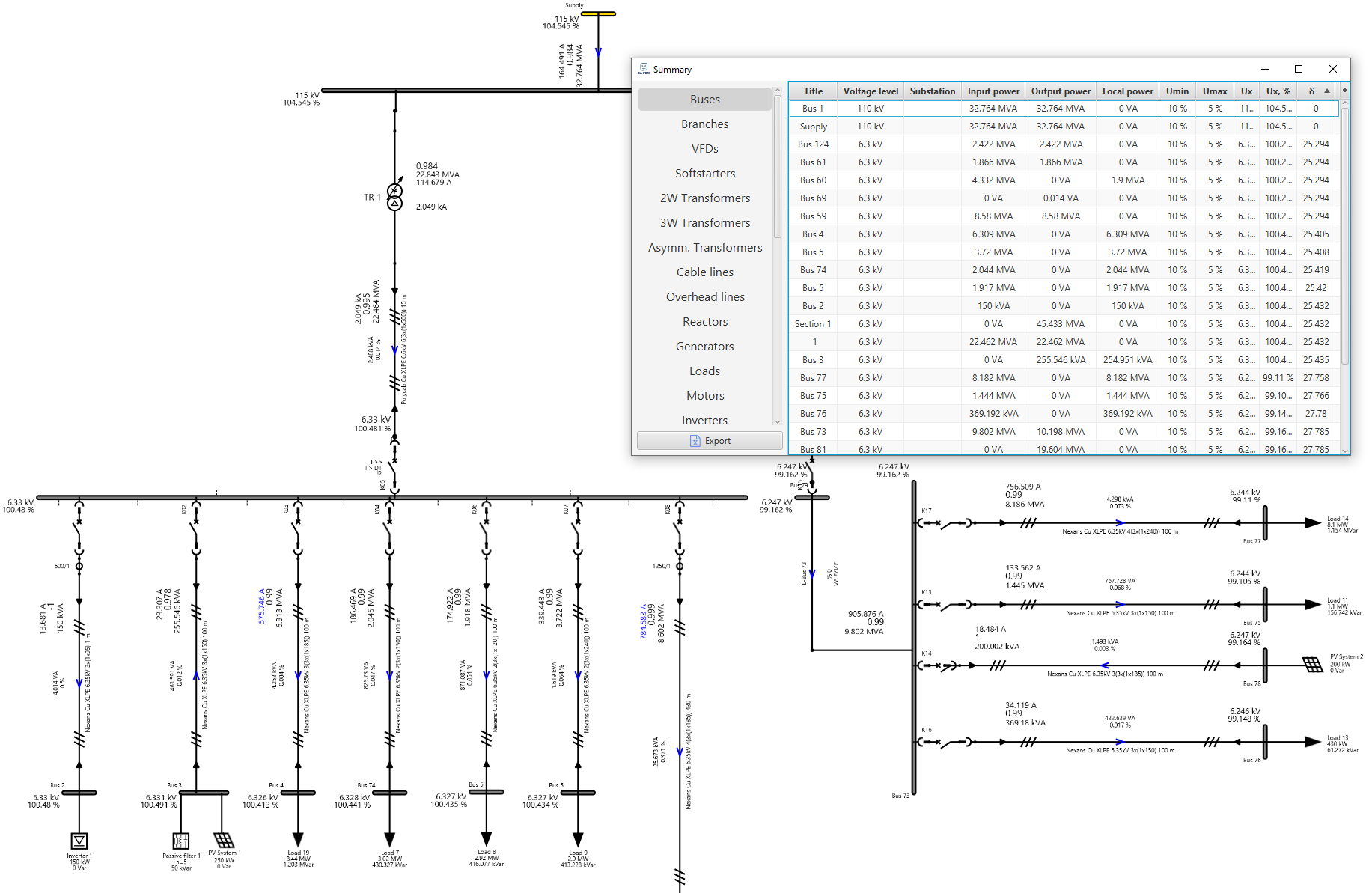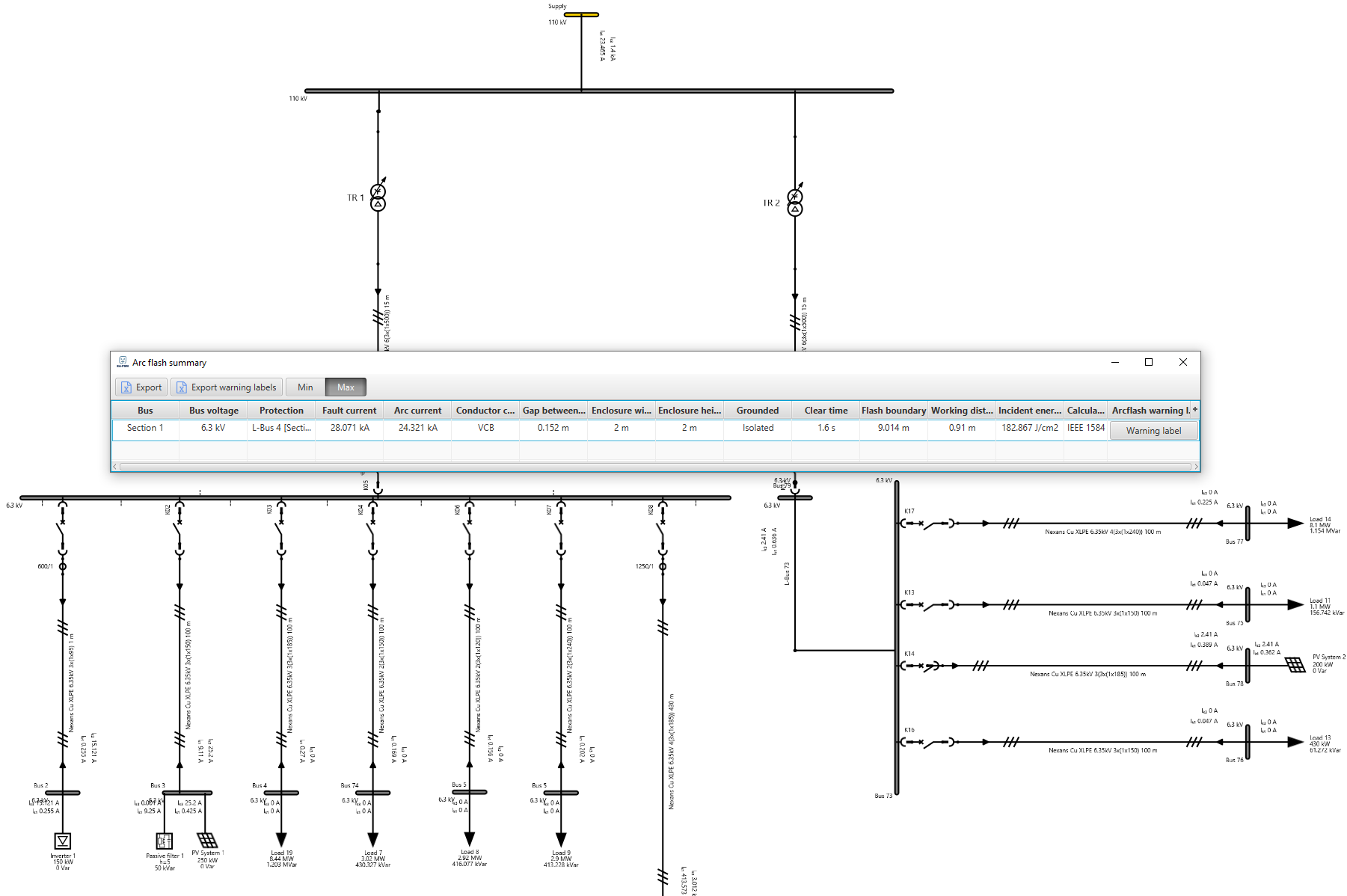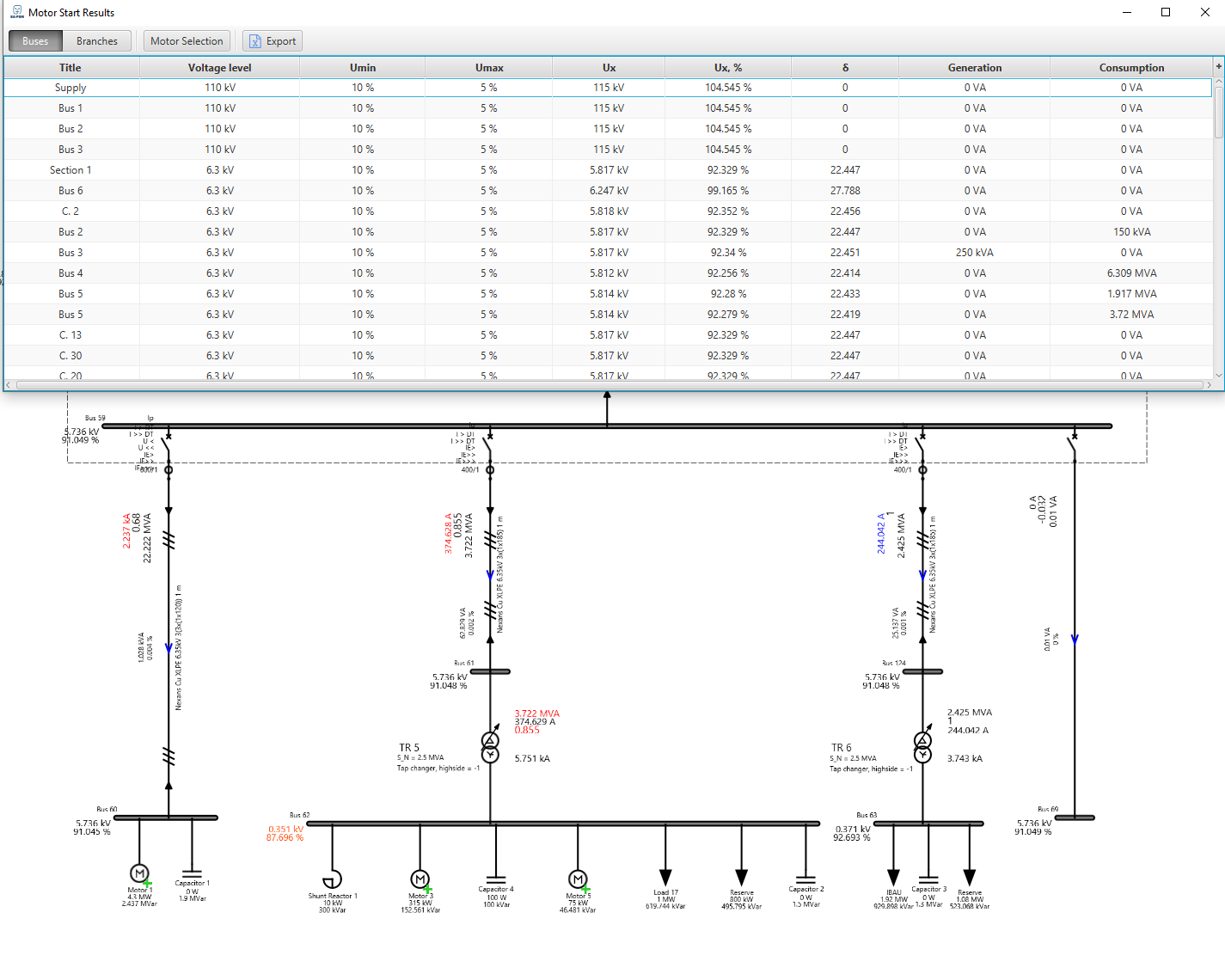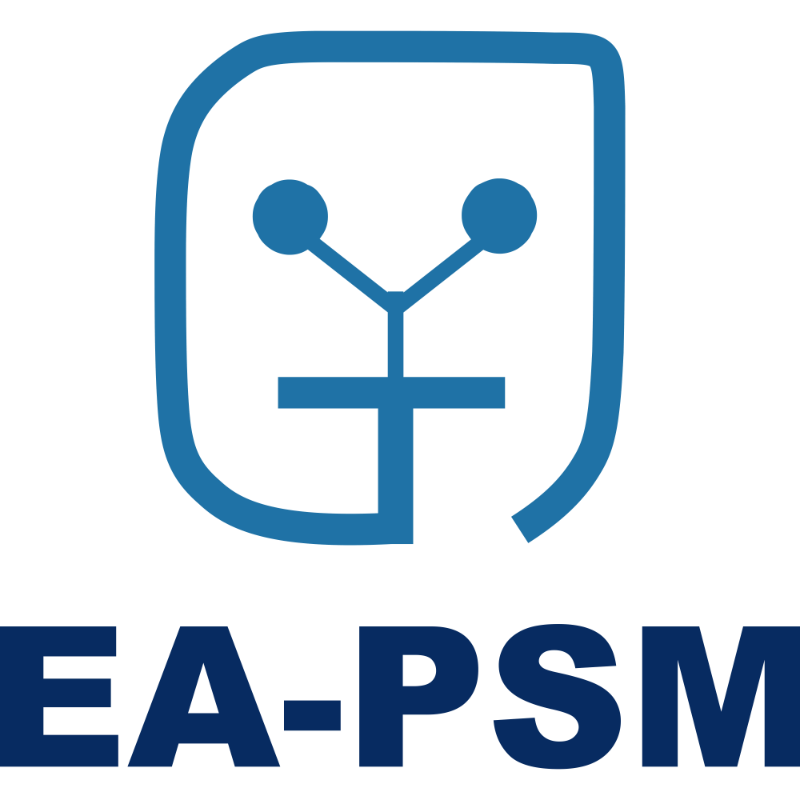Time dependent power flow – You can also evaluate the selected power system parameters at different input time periods.
Application
- Such studies help determine the effects of newly added elements before they are installed in the actual system
- A properly designed system helps contain initial capital investment and future operating costs.
- Conduct unlimited “what-if” studies with a couple mouse clicks
- The prior information serves to minimize the system losses and provides a check on reliability of the system.
- Reduce operating and maintenance costs
- Make changes to your system & re-run studies instantly


Short Circuit calculation – This feature allows users to get immediate results of three-phase, phase-to-phase, phase-to-isolated neutral and phase-to-grounded neutral short circuit currents. All calculations are done in accordance with IEC 60909 standard.
Application
- Determine system response to short circuits;
- Select appropriate equipment that can withstand short circuit current;
- Avoid device damage by protecting from overcurrents;
- Avoid unplanned outages and downtime;
- Reduce the risk of equipment damage and fires;
- Increase safety and protect people from injuries;

Arc flash – To pinpoint the specific arc flash hazard within a facility, arc flash calculations are necessary. Using this feature improves plant safety by defining boundaries that are important to prevent injuries of electric shocks or causes of fires. Firstly, to begin calculations busbar parameters must be defined such as: conductor configuration, gap between conductors, working distance and enclosure size. This feature provides a variety of conductor configurations when the parameters are selected calculations can be brought out and the given results are: flash boundary, safe working distance and incident energy. When calculations are complete warning labels are generated and can be printed.
Application
- Ensure personnel safety by specifying the required level of protective clothing (PPE)
- Meet most recent safety regulations
- Reveal system faults that require replacement
- Protection of assets and other related business interruption

Harmonic flow analysis – An abundance of power electronics in industrial networks increased the number of nonlinear loads and as a result more harmonics are generated. If the total harmonic distortion exceeds the set limit, it must be mitigated using filters. Harmonic flow study is carried out to determine if harmonic voltages and currents are at acceptable levels if not a correct filter should be installed. When the calculations are complete hovering over an object harmonic results are displayed in a graph.
Application
- Lessen damages due to excessive harmonic currents in transformers and capacitors
- Ensures sensitive electronic equipment will not malfunction due to excessive harmonic voltage distortion.
- Meet the utility’s voltage and current harmonic distortion regulation requirements.
- Power factor correction capacitors lessens the probability of an unexpected harmonic resonance that in result could lead to downtime or in worst cases equipment damage

Motor start analysis – This feature lets you determine the system state right after a motor start–up and evaluate the influence of voltage drops on other system elements after motor starts. After carrying out the calculations it can be seen if a soft starter is required. It also helps avoid dangerous overcurrent even before starting the motor. In addition, an extensive library of motors is provided, or its characteristics can be defined by hand.
Motor dynamic analysis – Dynamic analysis of electric motors aims to assess the state of the electric motor during operation. That means calculations are made when the motor is operating. Assess revolutions per minute, frequency, power, torque, current and generator characteristics when the motor is operating
Application

Relay coordination and protection tracking – These features are developed for the calculation, coordination and selectivity of relay protection and automation settings. They let you perform protection device order of operation study, solve relay mis-operation and mis-coordination problems, and find out reasons for false trips. EA-PSM lets you select protective devices from an extensive database of leading manufacturers’ products or define their characteristics by hand.
Application
- Perform protective device coordination and selectivity study;
- Ensure reliability of power network;
- Helps you select appropriate protective devices;
- Make sure that the proper protective device triggers after a fault occurs;

evaluate apparent power and power factor
a short circuit occurs
arc and fault currents and safe working distance
system and analyze its dynamic characteristics
and protection tracking ⏷ Solve relay and protective device misoperation
and miscoordination problems
Time dependent power flow – You can also evaluate the selected power system parameters at different input time periods.
Application
- Such studies help determine the effects of newly added elements before they are installed in the actual system
- A properly designed system helps contain initial capital investment and future operating costs.
- Conduct unlimited “what-if” studies with a couple mouse clicks
- The prior information serves to minimize the system losses and provides a check on reliability of the system.
- Reduce operating and maintenance costs
- Make changes to your system & re-run studies instantly


Short Circuit calculation – This feature allows users to get immediate results of three-phase, phase-to-phase, phase-to-isolated neutral and phase-to-grounded neutral short circuit currents. All calculations are done in accordance with IEC 60909 standard.
Application
- Determine system response to short circuits;
- Select appropriate equipment that can withstand short circuit current;
- Avoid device damage by protecting from overcurrents;
- Avoid unplanned outages and downtime;
- Reduce the risk of equipment damage and fires;
- Increase safety and protect people from injuries;

Arc flash – To pinpoint the specific arc flash hazard within a facility, arc flash calculations are necessary. Using this feature improves plant safety by defining boundaries that are important to prevent injuries of electric shocks or causes of fires. Firstly, to begin calculations busbar parameters must be defined such as: conductor configuration, gap between conductors, working distance and enclosure size. This feature provides a variety of conductor configurations when the parameters are selected calculations can be brought out and the given results are: flash boundary, safe working distance and incident energy. When calculations are complete warning labels are generated and can be printed.
Application
- Ensure personnel safety by specifying the required level of protective clothing (PPE)
- Meet most recent safety regulations
- Reveal system faults that require replacement
- Protection of assets and other related business interruption

Harmonic flow analysis – An abundance of power electronics in industrial networks increased the number of nonlinear loads and as a result more harmonics are generated. If the total harmonic distortion exceeds the set limit, it must be mitigated using filters. Harmonic flow study is carried out to determine if harmonic voltages and currents are at acceptable levels if not a correct filter should be installed. When the calculations are complete hovering over an object harmonic results are displayed in a graph.
Application
- Lessen damages due to excessive harmonic currents in transformers and capacitors
- Ensures sensitive electronic equipment will not malfunction due to excessive harmonic voltage distortion.
- Meet the utility’s voltage and current harmonic distortion regulation requirements.
- Power factor correction capacitors lessens the probability of an unexpected harmonic resonance that in result could lead to downtime or in worst cases equipment damage

Motor start analysis – This feature lets you determine the system state right after a motor start–up and evaluate the influence of voltage drops on other system elements after motor starts. After carrying out the calculations it can be seen if a soft starter is required. It also helps avoid dangerous overcurrent even before starting the motor. In addition, an extensive library of motors is provided, or its characteristics can be defined by hand.
Motor dynamic analysis – Dynamic analysis of electric motors aims to assess the state of the electric motor during operation. That means calculations are made when the motor is operating. Assess revolutions per minute, frequency, power, torque, current and generator characteristics when the motor is operating
Application

Relay coordination and protection tracking – These features are developed for the calculation, coordination and selectivity of relay protection and automation settings. They let you perform protection device order of operation study, solve relay mis-operation and mis-coordination problems, and find out reasons for false trips. EA-PSM lets you select protective devices from an extensive database of leading manufacturers’ products or define their characteristics by hand.
Application
- Perform protective device coordination and selectivity study;
- Ensure reliability of power network;
- Helps you select appropriate protective devices;
- Make sure that the proper protective device triggers after a fault occurs;

Other EA-PSM Features
DC calculations – this feature provides DC calculations that include power flows, time-dependent power flows, and short circuit analysis. You can model schemes using various types of elements such as DC cables, photovoltaic panels, DC batteries, AC/DC inverters, and DC circuit breakers
Wind turbine power quality analysis – calculations are based on IEC 61400-21 standard that establishes the procedures for measuring and assessing the power quality characteristics of grid-connected wind turbines. Parameters such as Flicker emissions due to continuous/switching operation and relative voltage change due to switching operations are calculated.
Solar irradiance modeling – solar irradiance modeling feature allows users to model PV systems generated power based on defined parameters such as number of inverters, PV cells, geographical location, tilt, and azimuth angles, and other specific values. When all the needed parameters are entered calculations can be performed and the given results are displayed in the “Irradiance chart”, “Monthly losses”, “Annual Sankey” tabs.
Reliability calculations – network reliability function lets users calculate parameters such as power availability, average load curtailment duration, and occurrences per year. In addition, system reliability parameters: SAIDI, SAIFI, CAIDI can be calculated. By optimizing network configurations, the possibility of power outages greatly decreases, thus resulting in greater efficiency
Cable selection and sizing – selecting the right cable are crucial in power system modeling. To do so users can select the cables from our vast library. When the cable type is chosen users can calculate cable ampacity by specifying the installation method and conditions. These calculations are based on IEC 60364-5-52 standard
Parallel line modeling – High voltage transmission lines can be constructed of several parallel conductors, arranged on the same or even different towers. This function allows users to analyze transmission networks with parallel lines, create custom models of towers with phase, ground, and lightning protection conductors as well as wire conductors
Export/Import data – our program provides a variety of exporting and importing capabilities. Users can export data to excel, AutoCAD, or .png formats.
Asymmetrical network calculations – this feature allows users to perform load flows, harmonics, and short circuit calculations in an asymmetrical network. To model an asymmetrical network, users should define asymmetrical elements: lines, wind turbines, photovoltaic systems, inverters, loads.
Advantages
Why you need this software?
Easy to use
EA PSM provides user friendly interface that allows clients to simply design schemes and perform calculations with a click of a button.
Time saving
Modern electricity networks are getting more complex, therefore requiring more difficult calculations to evaluate certain operation modes. EA PSM saves a considerable amount of time by allowing to change various settings.
Flexible
EA PSM allows you to input and edit various data into your digital project. Such as previous live test data or exact location of an object in doing so you ensure fast, efficient and secure decision making.

